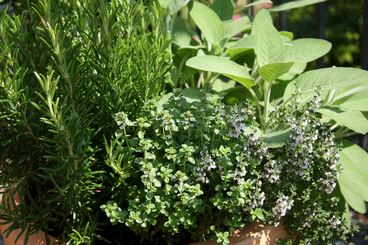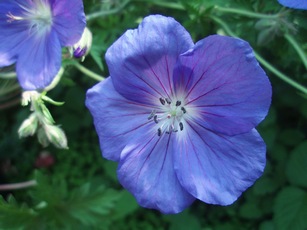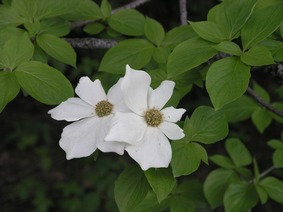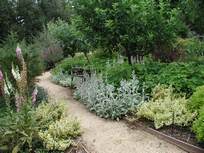Whether you grow a full-blown vegetable garden or a few herbs and edible flowers in containers, celebrate this Fourth of July by serving a menu created with produce harvested from your own garden. It may be too early for your corn or tomatoes to be ready but peas served with a touch of basil would be delicious. A fellow gardener recently told me that she loves steamed baby zucchini cooked with a small pinch of lavender flowers. I haven’t tried this myself but it sounds interesting, maybe garnished some some edible nasturtium or viola flowers.
Actively growing vegetables and flowers need a boost from  They use a lot of nutrients, especially nitrogen, at this time of year. Add water soluble fertilizer to your drip irrigation system or apply it through a hose-end sprayer. Sprinkle dry fertilizers over the soil around the plants or apply in trenches next to the rows. Water deeply afterward.
They use a lot of nutrients, especially nitrogen, at this time of year. Add water soluble fertilizer to your drip irrigation system or apply it through a hose-end sprayer. Sprinkle dry fertilizers over the soil around the plants or apply in trenches next to the rows. Water deeply afterward.
Remember that weeds compete with vegetables and flowers for moisture, nutrients and sunlight. Weeds can also serve as alternate hosts for disease and pest problems. You can prevent weeds from getting out of control by using the "half-hour" rule. Weeding for just half an hour every couple of days will save you hours of hard work in the future. By staying ahead of the weeds, you’ll grow more healthy produce and flowers.
If you battle dandelions and don’t want to use chemical weed killers around pets and children, get out the white vinegar from the cupboard. On a hot sunny day spray straight white vinegar directly on the weed. This method will kill whatever it touches so direct the spray carefully. If the dandelion is in the lawn, wait a week, pour some water on the dead spot to dilute any lasting effects of the vinegar. then pole a bunch a holes and drop in some grass seed. Sprinkle a bit of fertilizer where the seed is planted and keep the area moist. In three weeks you won’t remember where the dead spot was and the dandelion will be long gone.
Trees are the most important living asset on your property. They cool your house and offer shade and protection for your plants. They provide food and shelter for birds and other wildlife. Summer heat can take a toll on trees. Fruit trees, citrus and flowering trees need a deep irrigation every other week. Less thirsty established trees like Chinese pistache and strawberry tree need irrigation about once a month. Newly planted trees need water regularly. Gradually reduce frequency after a year or so.
There are ways to maximize the efficiency of the water you apply. Drill several 4" wide holes about 24-30" deep around the drip line of the tree, being careful not to damage large roots. Fill the holes with compost and water. Or you can use a soaker hose on the surface to slowly water the tree. Mulch heavily all planting beds. Do not use rocks or gravel as a mulch because hey add heat to the soil and moisture evaporates faster.
Happy Fourth of July.

 vested before the plants are about to bloom. That’s when the leaves are at their peak flavor. Pick a sunny day and harvest in the morning when the oils are strongest and morning dew has evaporated.
vested before the plants are about to bloom. That’s when the leaves are at their peak flavor. Pick a sunny day and harvest in the morning when the oils are strongest and morning dew has evaporated. s, Martha Washington pelargoniums and zonal geraniums and are all pelargoniums. , also called cranesbill, look very different. Leaves are roundish or kidney-shaped and usually lobed or deeply cut. Flower colors include beautiful blue, purple, magenta, pink or white and often completely cover the plant with color. I’ll bet if you visited a garden on a tour or admired a picture in a garden magazine it contained true geraniums.
s, Martha Washington pelargoniums and zonal geraniums and are all pelargoniums. , also called cranesbill, look very different. Leaves are roundish or kidney-shaped and usually lobed or deeply cut. Flower colors include beautiful blue, purple, magenta, pink or white and often completely cover the plant with color. I’ll bet if you visited a garden on a tour or admired a picture in a garden magazine it contained true geraniums.

 andscapes that provide four seasons of interest. Here are some tips I pass along.
andscapes that provide four seasons of interest. Here are some tips I pass along.